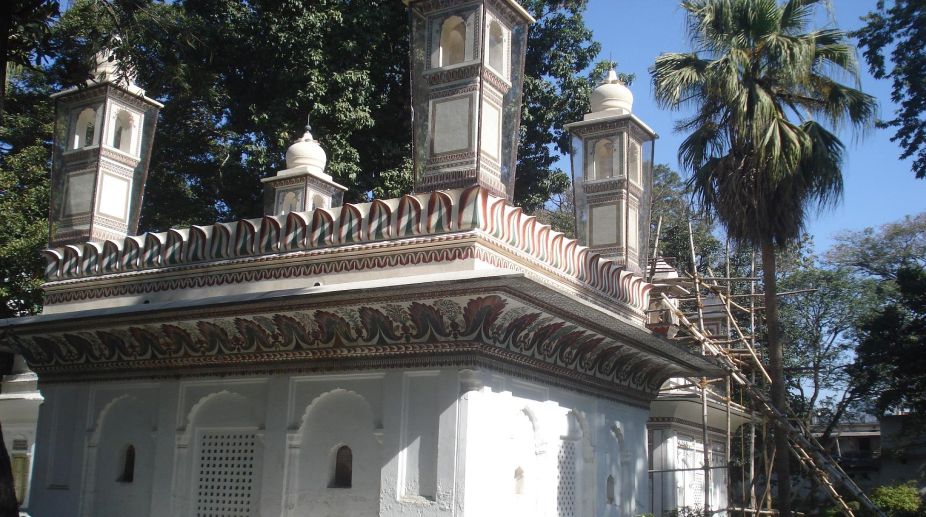Amid hill-plain row, Dhami calls regionalism injustice to statehood, nation
Amid the ongoing hill-plain controversy in Uttarakhand, Chief Minister Pushkar Singh Dhami has said Uttarakhand is a place for all.

Murals on a bath site of Guru Ram Rai was completed recently (PHOTO: SNS)
Sikh pilgrims visiting Uttarakhand’s capital for participating in the historic Jhanda fair will get an art treat this time. The main event of the fair, hoisting of the flag, is slated for 17 March and this year the visitors will get a chance to watch new art conservation work and also art recreation work at the Durbar Sahib campus- that is home to Uttarakhand’s one of the oldest wall paintings dating back to 17th century.
A team of artists are restoring murals on minarets of Guru Ram Rai cremation site in Dehradun these days and it is likely to complete by 11 March. The art recreation work on Brother Balaun’s gate, with floral pattern, got completed four months back. Similarly, the wall paintings on bath site of Guru Ram Rai too concluded recently.
Advertisement
The historic Jhanda Fair is associated with formation of the Dehradun city. The fair is held to mark the arrival of Guru Ram Rai in the Doon valley. The Sikh Guru of the Udasin sect came here in 1676 and established his 'Dera' (Camp). The name of Dehradun is believed to have originated from the 'Dera' established by Guru Ram Rai. The campus is now known as Durbar Sahib.
Advertisement
Coordinator of Durbur Sahib, Vishnu Kumar Nautiyal says, “Besides the art conservation and recreation work, we have renovated the pond near the main shrine.”
A part of the murals of the Guru Ram Rai Durbur, on the Darshani gate side, were getting damaged by seepage of the pond and after renovation this problem is likely to end. Considering the historic importance of the wall paintings, the Archaeological Survey of India conducted the first phase of art restoration from 2004-09. Now the Durbur Sahib is doing the remaining work by involving a team of art experts.
The wall paintings at the Durbar Sahib were painted in three phases, from early 17th century to middle of the 19th century. The walls of the Guru Ram Rai complex present richly decorated paintings on various subjects. Most prominent are scenes from the Mahabharat, Gita, Ramayan, Krishna Leela, Durbar life and murals on common people.
Art historian and author of 'Early paintings of Garhwal' B.P Kamboj says, “The art work done in the first phase mainly includes floral designs. The art work on bath site and Guru Ram Rai cremation site were among the early work which possibly started in 1707.”
The fresh layer of colour has provided new lease of life to the historic murals of Guru Ram Rai durbar. Restoration work is taking time as it involves a tedious process. Senior art conservator Sunil Kumar says, “After removing dust and dirt, molding work is done. As the art work was lost, especially due to rain and other climatic conditions, first the original art is traced and later painted.”
The Guru Ram Rai Durbar is home to hill state’s ancient and rare wall paintings. The Sikh Guru was provided sanctuary here by the Maharaja of Garhwal on the request of Emperor Aurangzeb. The artwork has influence of Mughal art. The murals are captivating and the range leaves one spellbound.
The Jhanda fair is annually organised, on the fifth day after Holi. Besides local people, a large number of devotees from Himachal Pradesh, Uttar Pradesh, Delhi, Punjab and Haryana come here for the event. This year the pilgrims will get a chance to glance newly restored artwork.
Advertisement